Hard-core is one way of describing them. Extreme, focused, harsh, uncompromising.
This article first published in MOTOR Magazine November 2004.
Whatever, the message from this quartet is crystal: we’re built for power, speed and the rest can take a back seat, if there is one. Which is fine by us; there’s something to love about any car maker with the clout and courage to build a low-volume, speed-sport road racer that forsakes comfort, luxury and equipment for the sake of getting from point A to B in FQ time.
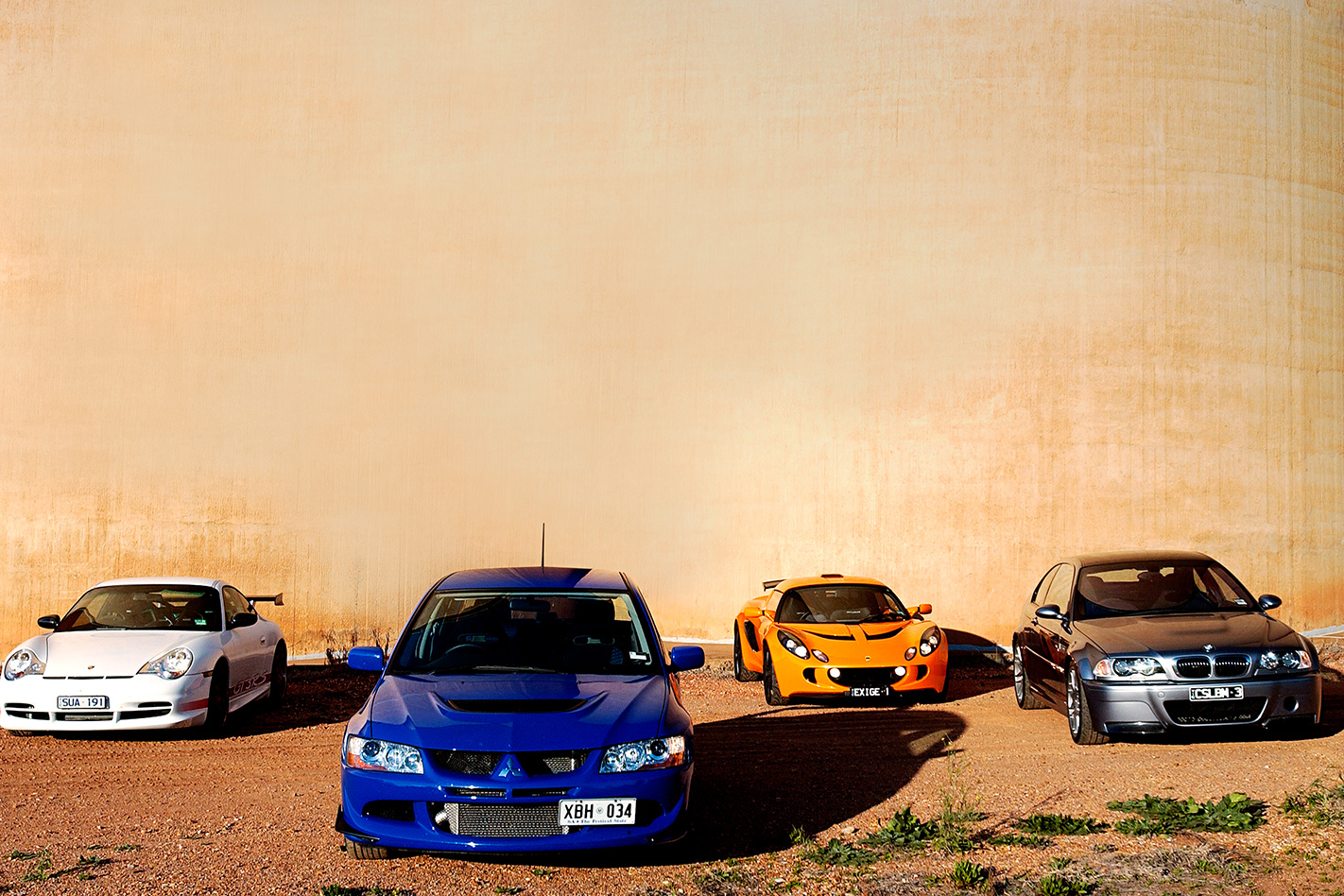
What we have gathered here – for a total of just 28 hours – are four flagships from four such makers: Mitsubishi’s Lancer Evolution VIII Ralliart, Lotus’s Exige, BMW’s M3 CSL and Porsche’s 911 GT3 RS all lightweight, super road racers sharing the single aim of speed.
What you won’t find here are the luxuries and their accompanying weight burden: not one possesses cruise control, sat-nav, a multi-CD stacker, or electric seats – and only one has the luxury of reclining seats, and just one other has rear seats. In one, carpet is an option.
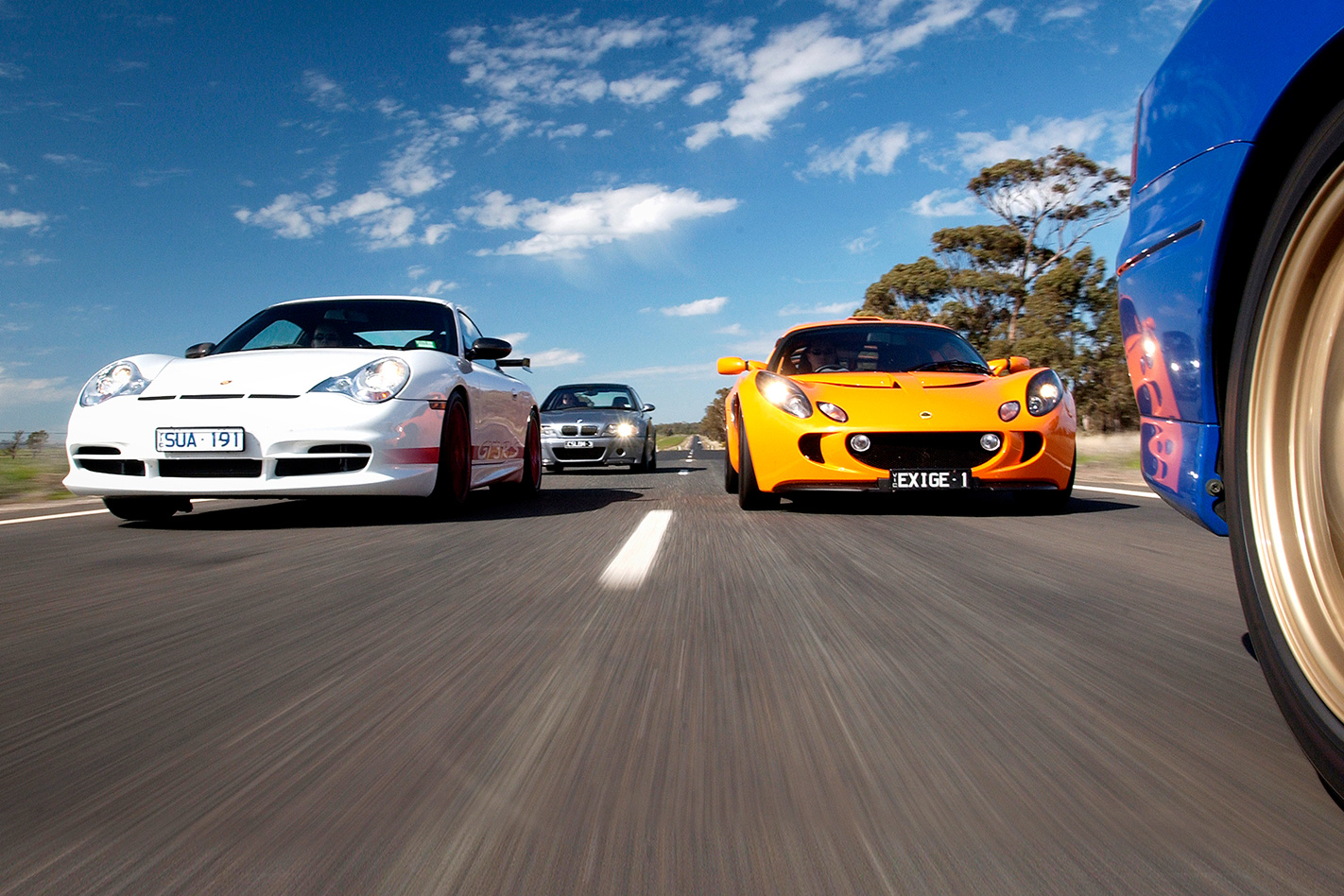
So efficient are their engines at extracting power from modest capacities – not one bigger than 3.6-litres – if each had the same 5.7-litres as a 300kW HSV V8, these hard-tuned racers would range between 339kW and 472kW!
So, differences aside, who makes the purest road and track star? Can a four-cylinder Lotus really compete with a Porsche twice its power and almost thrice its price? Is a humble Japanese sedan any match for the blue-bloods from Germany, and is power more important than weight? And is all-wheel drive enough of an advantage over rear-drive and super-sticky semi-slicks?
Sweeping, quiet country roads around rural New South Wales, and our standing quarter-mile test track were the perfect places to take $675,000-worth of pure-breds to find out.
EVO Ralliart
A World Rally car stuffed inside a four-door sedan, Mitsubishi’s Evolution is the most visually unassuming of the assembled crop, but among them it hits least where it hurts most: $61,990 buys a big bag of blammo. No wonder it’s the 2004 Bang For Your Bucks champ.
But in this company, that’s not enough. So Mitsubishi threw together this mildly-tuned, one-off hottie using Ralliart power and dress-up bits. Despite its blue and gold STi-styling, it’s actually been built for Mitsubishi boss Tom Phillips to showcase some of what’s available for the E8.

It not only brings down the chassis, but offers less roll and, with its spongy reclining Recaros, a ride quality so good it was always first pick on the freeway hauls. And when a lowered EVO offers the best ride and comfort, you know this is a hard group!
The EVO’s 2.0-litre four is the most size-powerful engine here and breaks the 100kW per-litre barrier, which isn’t a massive surprise, given that it’s the only one that’s boost-induced. More than the extra power, it is thanks to the removal of the standard car’s 5000rpm launch rev-limiter that it shoots to 100km/h in 5.0, three-tenths faster than the original recipe. It’s faster over the quarter-mile too, by 0.3 secs and 2km/h.
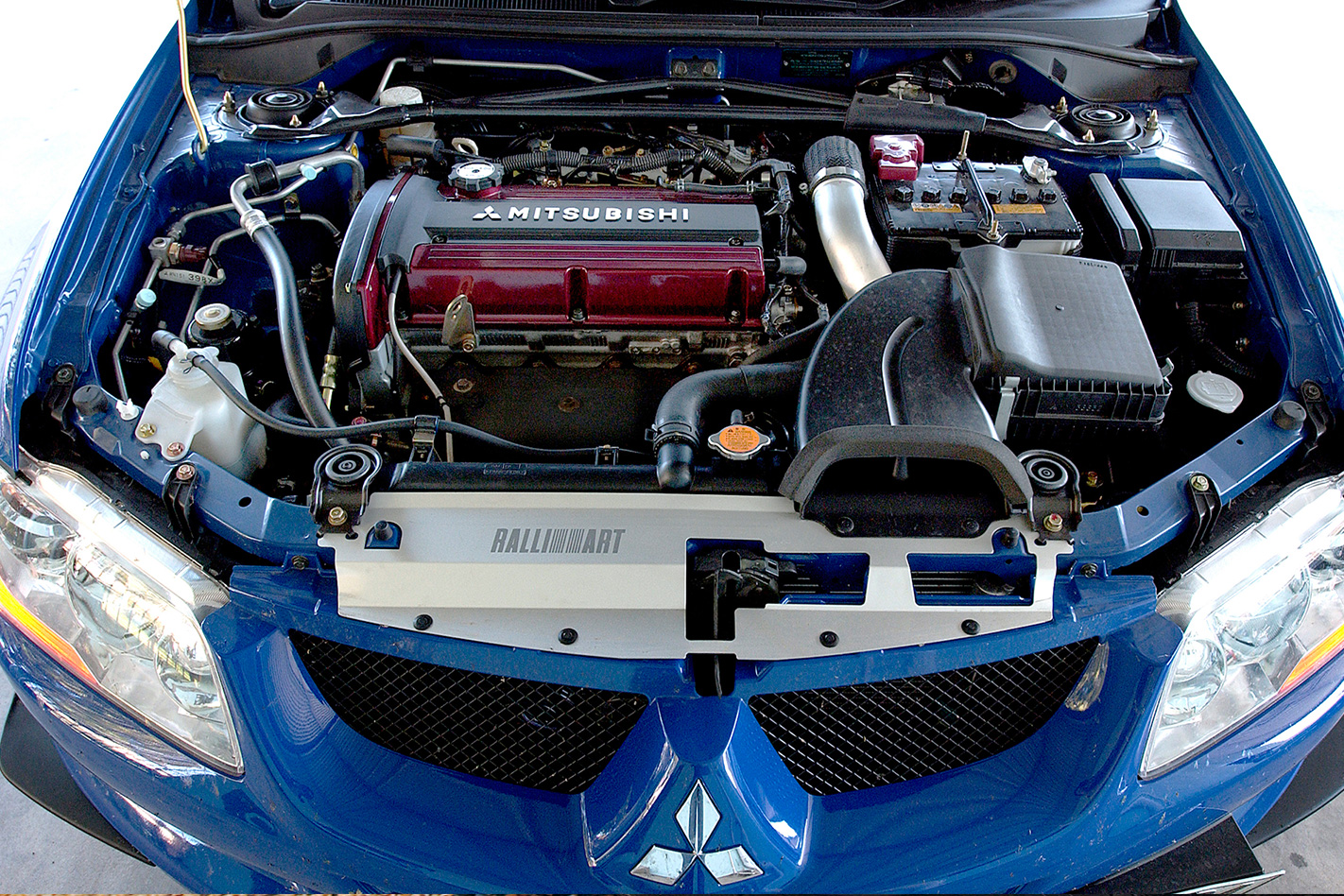
Though it’s heaviest here by 85kg, the EVO’s trump card is its mass of mid-range torque. While atmo engines respond with immediacy, their peaky natures require a wind-up to extract the best. The EVO is simple: boot, boost, bang an instant mountain of torque from 3000rpm. And it’s punchy enough to keep pace with the CSL – until the BM fills its lungs and runs away.
No, it’s the Exige that offers the EVO its closest competition. To 100 kays, it’s even-Stevens, but the EVO’s third- and fourth-gear power rush edges it ahead above 130km/h.
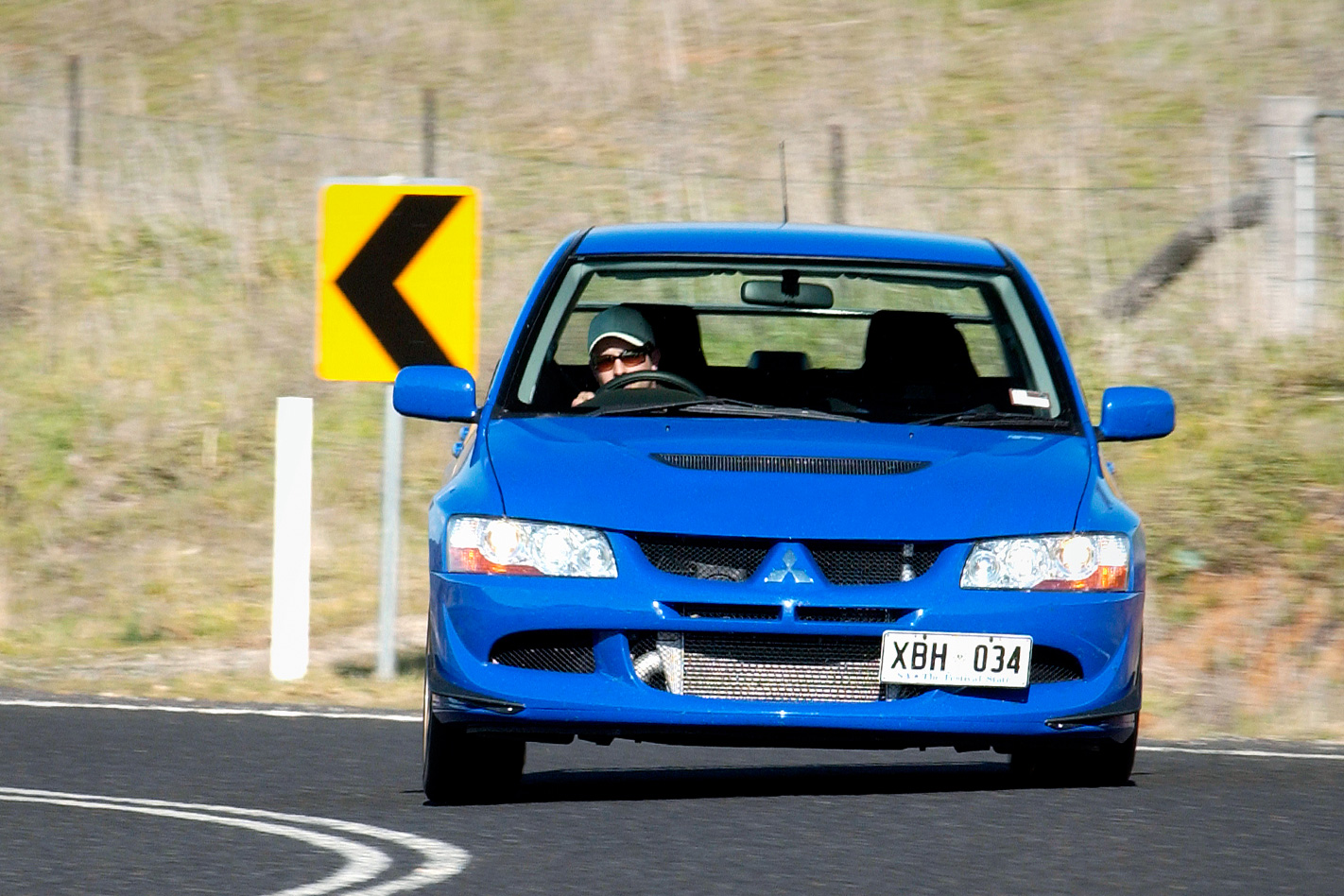
Believe in the diffs, bury the boot, and it’ll explode from every corner with a few degrees of oppy-locked oversteer, such as to roll back any disadvantage from being the only one here on full-treaded road tyres.
A third of the BMW’s price, a quarter of the Porsche’s and $35k less than the Lotus, the EVO offers supercar performance on a family-sedan budget. And on a flowing, wet mountain pass, it’s the EVO in which you’d be most comfortable, fastest and most feared.
Lotus Exige
The Lotus Exige is Bruce Lee. It’s highly skilled, raw, lean and mean, always controlled and ready for a fight. Don’t underestimate the Exige, because it’s ready and able to kick the shitake out of anyone.
Its 13.7 quarter-mile may be slowest here, but it’ll still leave a Commodore SS for dead. The Exige’s 887kg is half that of an FPV Falcon, and the equivalent of five adults’ weight less than the Porsche. Superb through the swerves, its steering is small enough to twirl in hand-cuffs, but so direct, full of feedback and feel.
Its Yokohama semi-slicks offer so much grip that even when red mist falls, they just dig in and ask, “Is that all you got?”, while its brakes dig in its nose like a flea into a dog’s back.
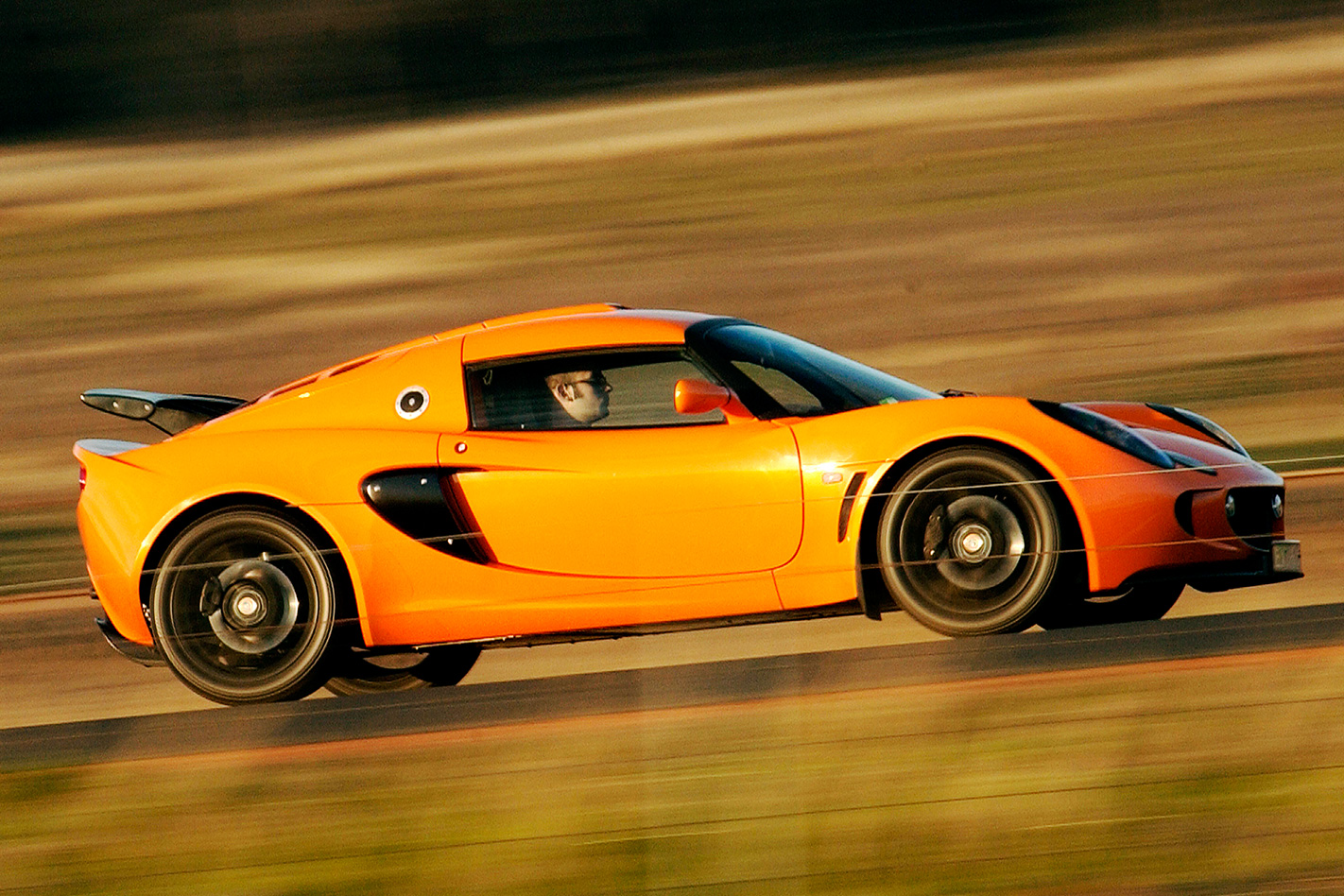
For $5k over the similarly-engined Elise 111R, the Exige offers unique wheels, front splitter, hardtop, meshed engine hatch, side scoops and rear wing. Its Toyota engine is good, but not only is it the smallest here, its air-sucking 1.8-litre makes just half the power of the Porsche – and just half the torque of everything else.
Off cams, it’s still grunty and eager, but has most of its horses hiding in the top paddock. Getting speed from the Exige is like inflating a balloon with a hole in it: let your attention stray, and it goes limp. From 4000rpm, it picks up the pace, but it’s at 6250rpm when it turns nasty.
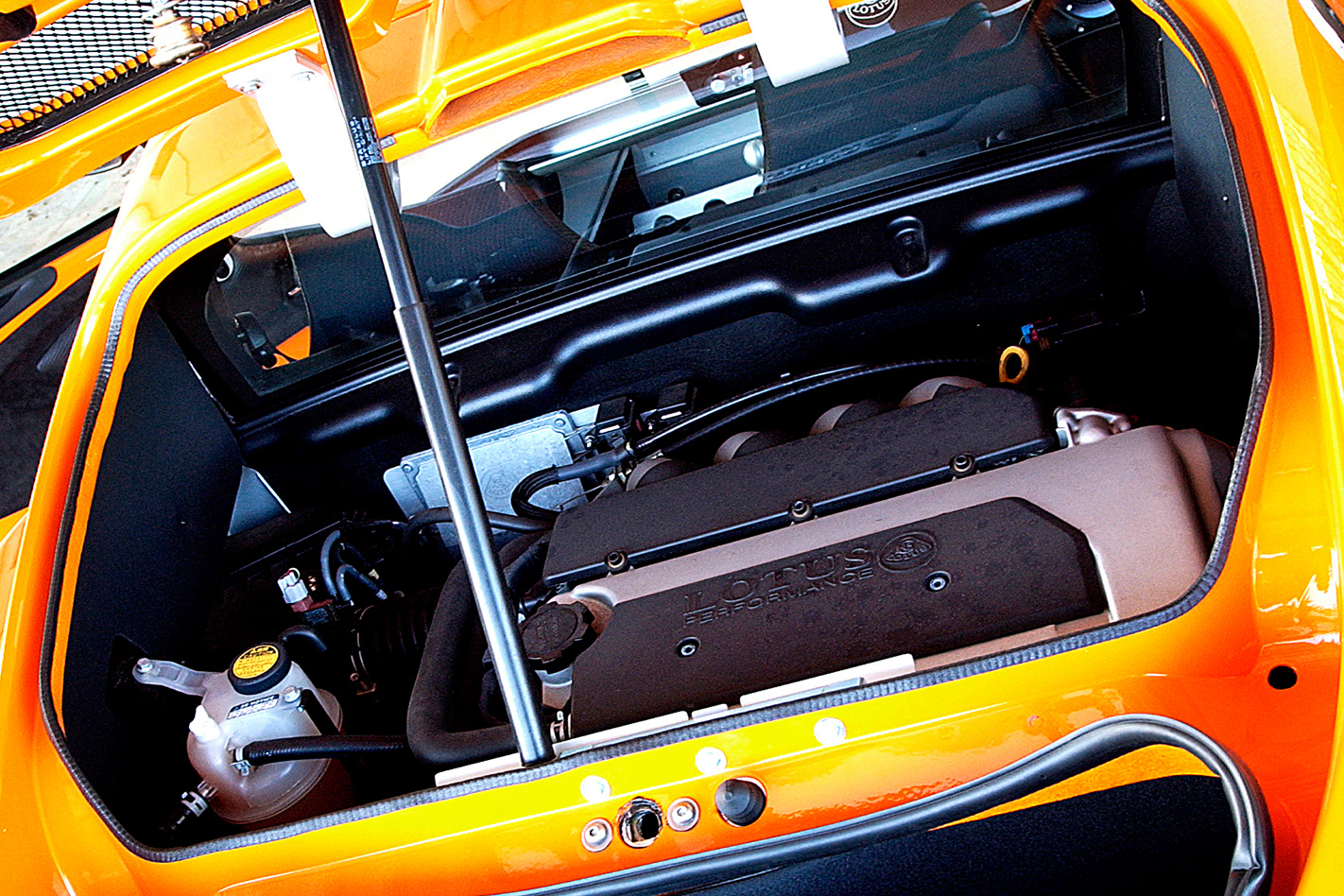
It’d want to be damn fast, because practicality wasn’t a pre-requisite on Exige’s resumé. It’s the hardest-riding here, but its suspension is, surprisingly, comparatively compliant (check the body roll, left) and bumps throw it around simply because it’s so light.
Rear vision is as good as any ’70s supercar’s – think fencing through jail-cell bars, with blind spots in the C-pillars as big as a Commodore’s. Just entering the waist-high wonder is like climbing into a mailbox slot, but once in, it becomes part of you as the world becomes a narrow, 180-degree view, trapping car door handles, truck wheels and groins.
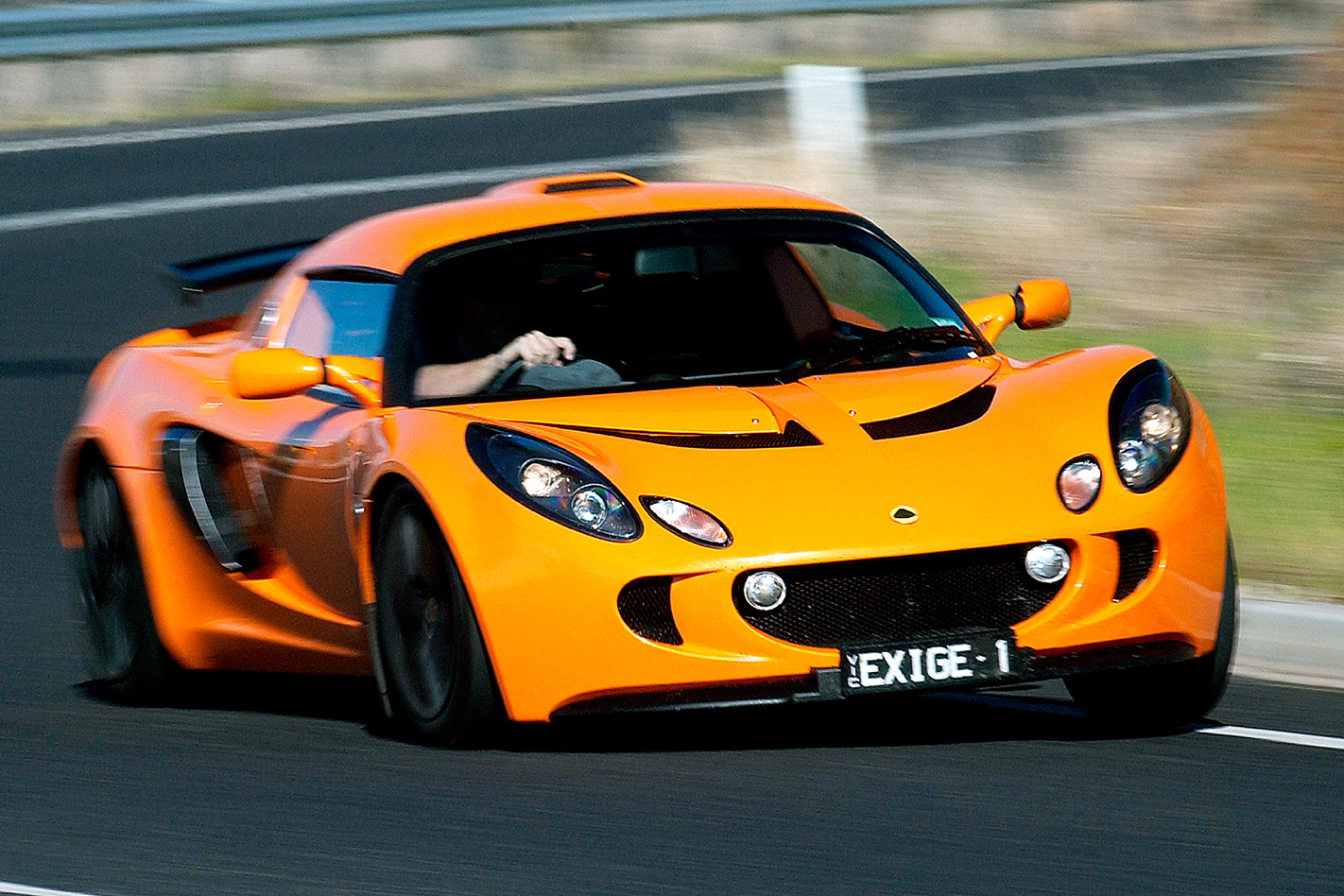
Masochistically, its quirks add charm and character: the Exige is the purest, most uncompromising, and focused road racer here, and it doesn’t pretend to be anything else. Want comfort? Bugger off, then. You need to be phsically eager to wrestle the best from the Exige.
It was always last pick on mornings, nights and freeway runs, but on a sunny day, with a smooth, tight winding road ahead, Exige is the king.
M3 CSL
Ka-ching! Our hand’s deep in the big biscuit tin with BMW’s M3 CSL. For an extra $68,000 over an M3 SMG, the CSL gets more power and less equipment. But, at $210,000, it’s double the price of the Exige. Does the speed match the greed? Let’s see.
Try as we did to match BMW’s claimed 4.9, the CSL was slowest to 100km/h in this group – if you call 5.2 slow – but it’s a grossly misleading, out-of-context figure. Its 13.3 quarter-mile jumps it to second-fastest, and its 179km/h trap-speed is a massive 14km/h more than the EVO and Exige. The tricky SMG’s launch control works hard to put 265kW through its super-tacky tyres, but 235mm just isn’t a lot of Michelin. Or you’d think that until you turned in. Fork me!
The CSL’s thick alacantra wheel offers the best turn-in here, and its slick-impersonating Cup tyres bite hard with immense mid-corner grip that raises it to the levels of the super-light Exige. Push, push, push, and the CSL just grips as if vacuumed to the ground without any comprehension of tyre squeal. It invites you to build confidence, so jump on the gas real hard, real early, and it’ll blaze up a pair of lines as dark as night, as predictable as a ‘horse walks into a bar’ joke.

Stamp on its brakes and the tyres aren’t even fussed with ABS, its single-piston calipers doing a job way better than their specs would suggest. A weak point? Hardly.
Inside are luxuries lacking in the four-cylinders: climate control, trip computer, carbon-fibre console and door trims. Instead of stereo and cruise controls on the steering, there’s a single on/off button for M-track a ‘competition’ mode that ups the limit of, rather than disables traction control.
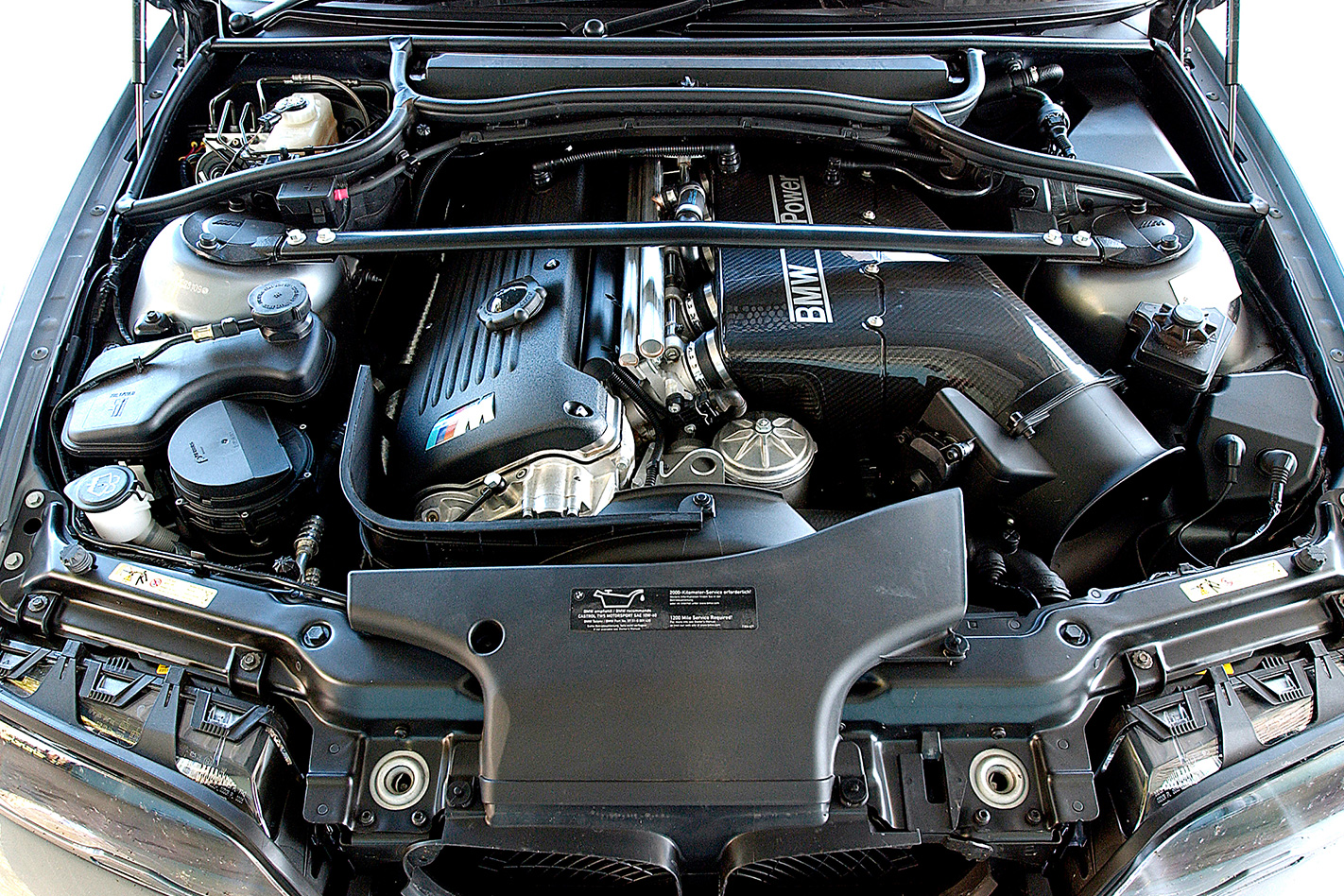
And all with a heavenly sonic blast that’d put goose bumps on a baking turkey. Brake hard and tap the paddle down a gear and the ’box blips the throttle like a pro’.
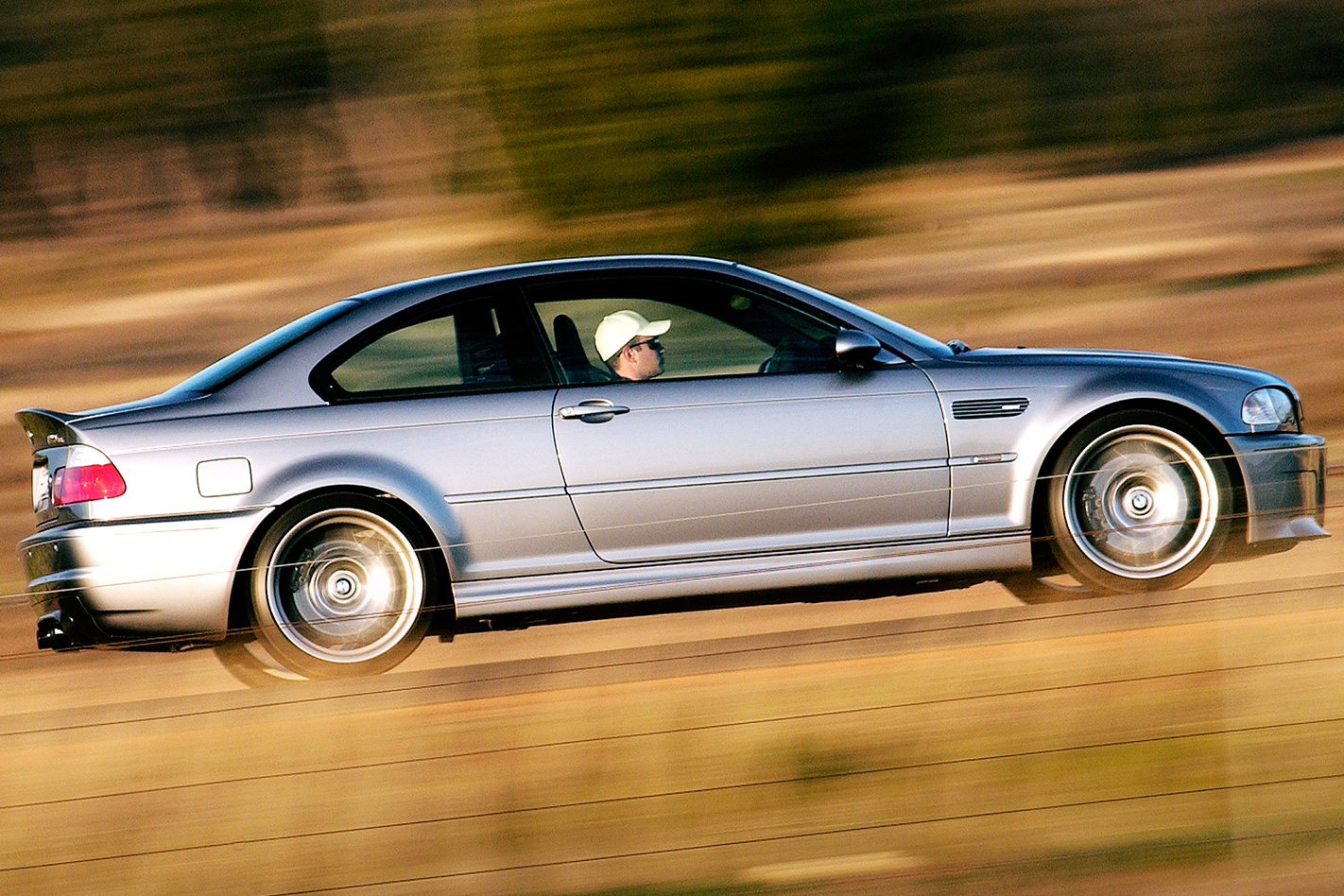
Keep in mind though, that the M-power straight-six does lose 400cc and gain 25kg to the Porsche, so it’s not entirely fair. Especially when the CSL is $78,000 less.
With just 23 of its kind in Australia, the CSL is a big step up from the M3, and on an open track day would be the one to watch for most in the mirrors, regularly pumping out lap times that would be the envy of many a race car. But is it the best here when a Porsche is present? Let’s see.
Porsche GT3
So, let’s continue discussion of the previous page’s battle between Porsche and BMW. The CSL is half a car length in front as it passes 110km/h. As the M3 shifts into third gear, a white and red blur lurches by, landing two car lengths ahead! Damn, how the hell did that happen?
Simple: the Porsche’s tall-gearing tops out at 135km/h in second gear; its panoramic spread of 385Nm takes care of any tall-gearing issues and throws it down the road with a massive advantage of torque and in-gear top speed.
Third gear rams it home, grunting the GTS away from the CSL with ease, if not comfort. Yep, the GT3 RS is a bullet at the drags, but the view through the CSL’s screen suggests that it’s far from docile: its 295 Pirellis follow bumps and lumps, squirming the chassis as it powers down a twisty 280kW, like Houdini escaping from a straight jacket. Don’t forget standing starts: the rear-engined GT3 blasts off the line, blitzing the others with a 0-100km/h in 4.3 seconds!
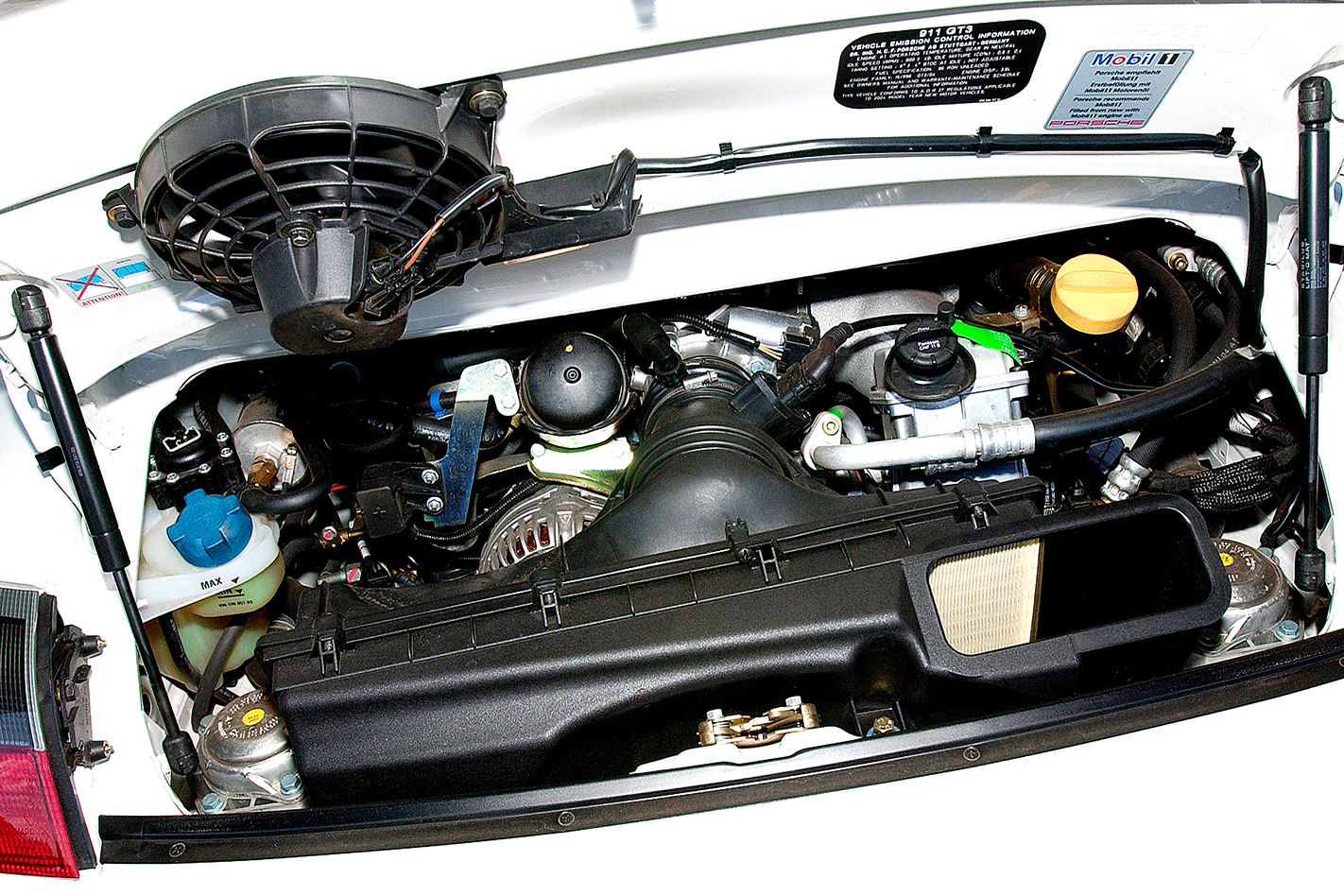
We detailed the RS’s changes over the GT3 Club Sport last issue, but it loses 50kg through a Perspex rear window, carbon/kevlar boot and bonnet.
Its wrap-around seating is spot-on, as low as the Exige’s. It’s almost as intent on lap times too, save for its consideration of climate control, trip computer, a decent CD stereo and, shock-horror, cup holders!
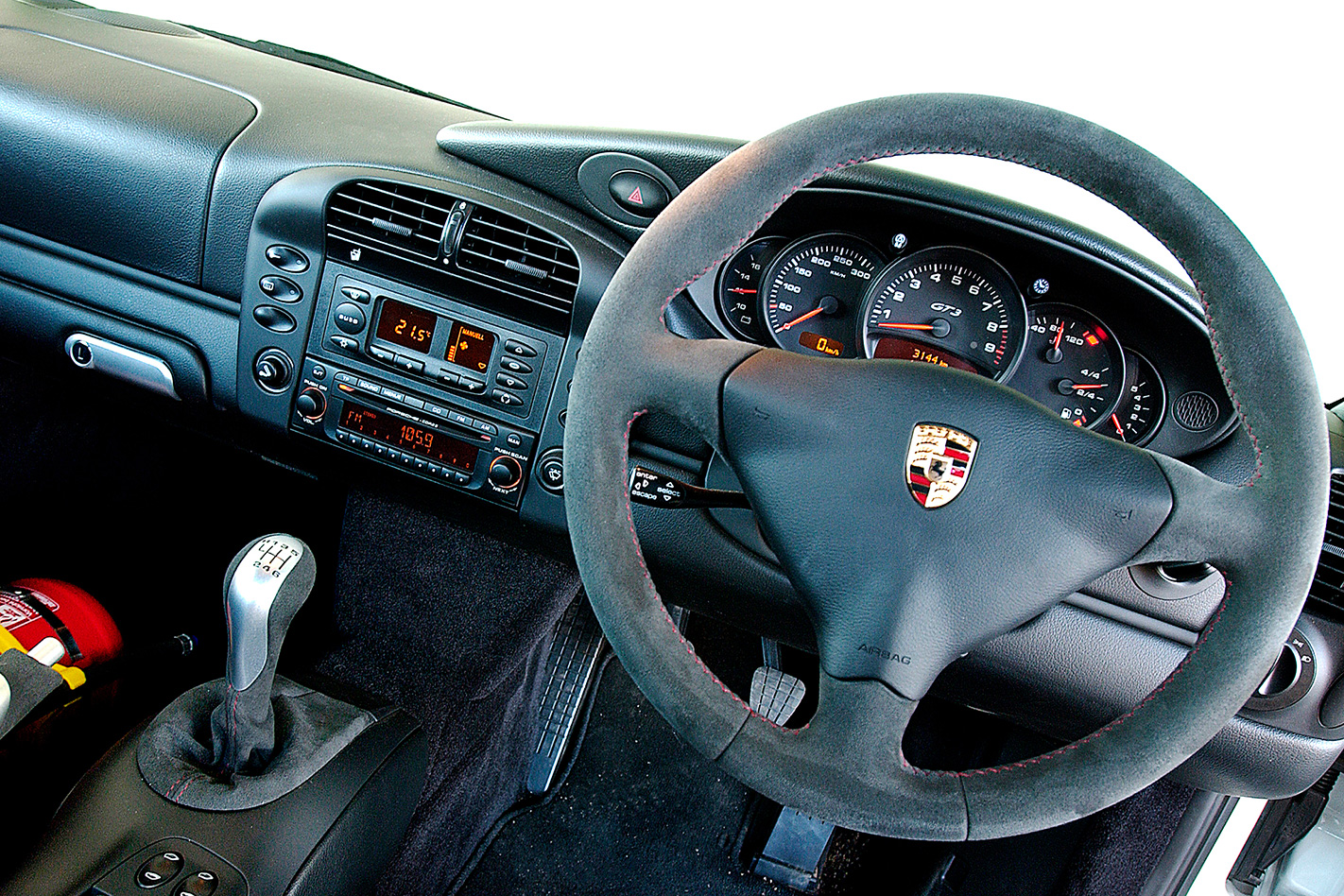
It’ll blow away the Exige, EVO and CSL in any and every straight-line test. And while it’ll carry similar speed into the turns, you dare do it only with a clenched ring, tightened hands and a bead of sweat on the brow. It’s pure and simple hard work compared to the other three here. You don’t throw the RS at corners you ask politely, and smoothly feed on the power carefully, so as not to piss it off.

It may be a most intimidating car, but don’t take any shit from the RS. Grab it by the collar, present it your fist, be assertive without being clumsy, and it’ll reward you not just with speed the others can’t match, but with a euphoric, brainwashed conviction that a stripped-out, hard-riding, ready-to-race $288,000 two-seater really is damn good value.
And the best road racer is…
So which is the best road racer here? Normally it’s the most expensive, and it’s hard to argue against the Porsche. But the EVO VIII is truly a bang-for-bucks champ. It’s comfortable, fast, practical, well-equipped and with all-wheel drive, is a blast to simply point and shoot on any road, in any condition. Its 98km/h peak in second gear lost out a touch in 0-100km/h bragging.
Big deal. Personally, we’d save some dollars on the dress-ups and fit some semi-slick tyres and squeeze out a few more kilowatts to really ruffle some expensive feathers. This tuned blue EVO is impressive, but we know there’s potential for more.

Worked hard, it’ll match the CSL and RS, and maybe even claim the odd upset when corners are abundant. But it demands more constant attention than the bigger, badder machinery.
The Exige is the purest, least compromised-for-comfort road racer here. On a dry, tight winding road, few will keep pace, present company included.

Until the GT3 RS winds up and blows it away. It was fastest, no ifs or buts, with the torque to beat the EVO, the braking to beat the Beemer, and the ease of speed the Exige could only dream about. It doesn’t win in every category, but it’s always up there. And anything that can make a CSL feel slow is a damn missile in our books.

For 300 thou, you expect hard-core performance, and Porsche’s GT3 RS is a demanding drive. But it’s clearly the hardest, fastest, most thrilling road racer amongst this extreme team.





